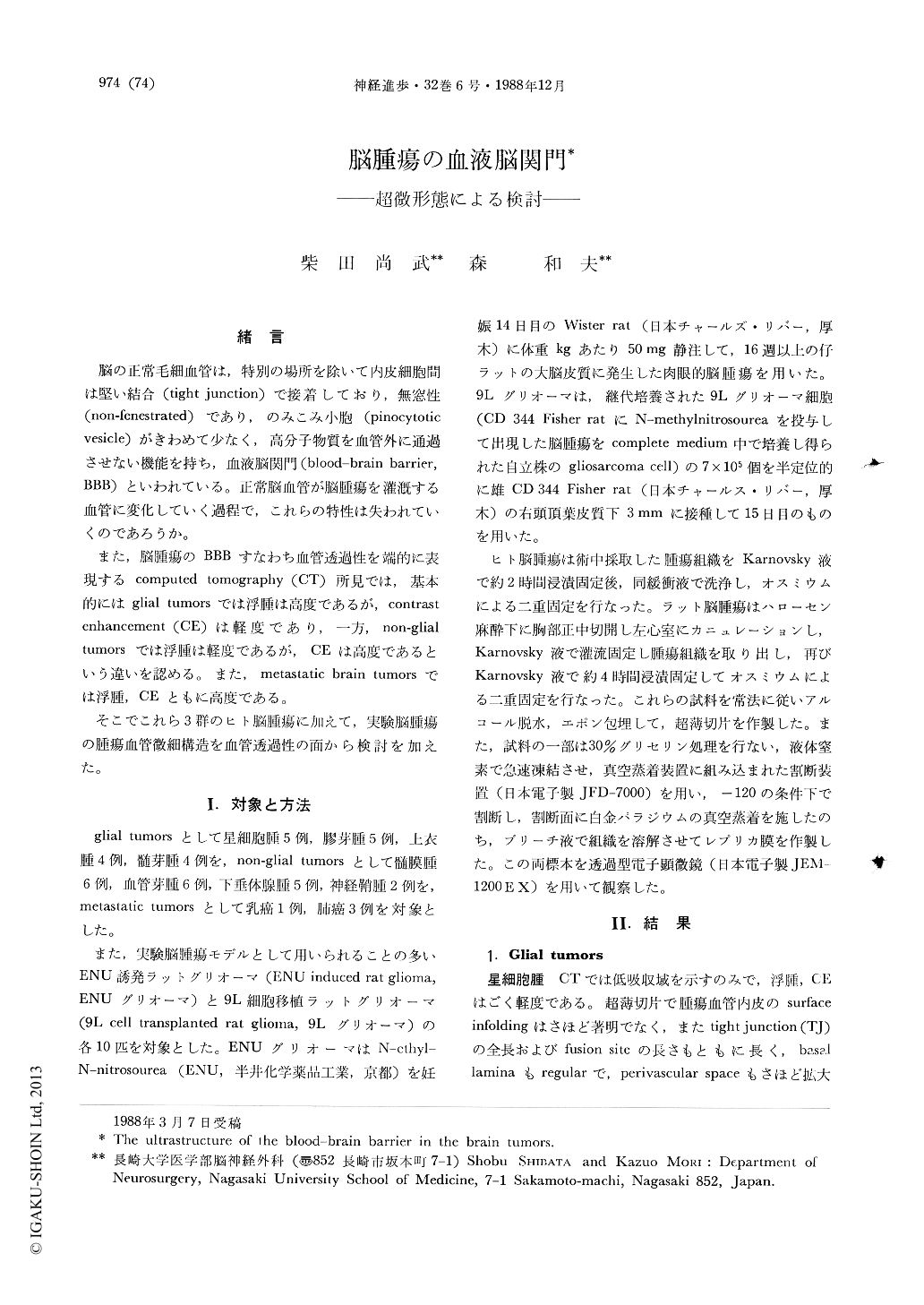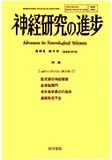Japanese
English
- 有料閲覧
- Abstract 文献概要
- 1ページ目 Look Inside
緒言
脳の正常毛細血管は,特別の場所を除いて内皮細胞間は堅い結合(tight junction)で接着しており,無窓性(non-fenestrated)であり,のみこみ小胞(Pinocytotic vesicle)がきわめて少なく,高分子物質を血管外に通過させない機能を持ち,血液脳関門(blood-brain barrier,BBB)といわれている。正常脳血管が脳腫瘍を灌概する血管に変化していく過程で,これらの特性は失われていくのであろうか。
また,脳腫瘍のBBBすなわち血管透過性を端的に表現するcomputed tomography(CT)所見では,基本的にはglial tumorsでは浮腫は高度であるが,contrast enhancement(CE)は軽度であり,一方,non-glial tumorsでは浮腫は軽度であるが,CEは高度であるという違いを認める。また,metastatic brain tumorsでは浮腫,CEともに高度である。
Changes in capillary permeability between human glial, non-glial and metastatic brain tumors were studied with conventional ultrathin section and freeze-fracture replica techniques. Similar studies were also carried cut in ENU induced brain tumors and 9L cell transplanted tumors in rats.
The following results were obtained. 1) In glial tumors, cell junctions of the capillaries were either short or elongate. Endothelial hyperplasia, surface infolding of endothelial cells, irregularity of the basal lamina and a large extravascular space were also observed. In freeze-fracture replicas of capillary endothelium, tight junctions were seen as two to seven strands. Pinocytotic vesicles were increased markedly and were an average of 25 per μm2. In contract to malignant gliomas, slight changes were noted in benign astrocytomas. 2) Common findings of non-glial tumor vessels in ultrathin sections were surface infoldings, increased vesicles, many fenestrations of endothelial cells, irregularity of basal lamina and enlarged perivascular space. In freeze-fracture replicas of vascular endothelium, average number of pinocytotic vesicles and fenestrations were 25 and 22 per μm2 respectively. Tight junction was composed of one or two strands which appeared to be a discontinuous array of particles. 3) In metastatic brain tumors, the capillary endothelium was proliferated, had marked infolding, and showed an increased number of pinocytotic vesicles and many fenestrations. Short and elongate intercellular junctions were presented but no open junction was detected. The basal lamina lost its three layered appearance and was irregular in width. The most fundamental features of vessels in these three different kinds of tumors were whether they were fenestraed or not. Glial tumors were non-fenestrated, whereas non-glial and metastatic tumors were fenestrated. 4) Behaviors of tumor vessels of ENU-induced brain tumor were similar to human glioma vessels in the point of having endothelial tight junction and increased pinocytotic vesicles. Contrariwisc, vessels of 9L cell transplanted brain tumors had a great resemblance to human metastatic brain tumor vessels from the viewpoint devoiding of endothelial tight junction and presenting fenestrated endothelium. As regards to the BBB problems in human glioma, ENU induced brain tumor model was thought to be superior than 9L cell transplanted brain tumor.

Copyright © 1988, Igaku-Shoin Ltd. All rights reserved.


